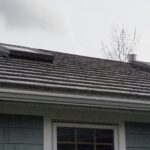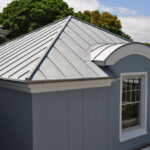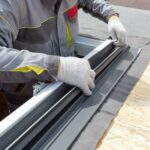Lightning and Metal Roofing
PROBLEM
A common question about metal roofing is whether it creates any greater risk of lightning strikes. There is still much that is not known about lightning but most experts agree that a path of ionization begins from a cloud and extends earthward. This path of ionization establishes a route for a lightning strike. The dramatic part of the strike occurs when electrons race upward from earth to sky along this route, resulting in the characteristic flash of light. Resistance to the flow of this electricity will generate heat energy and can cause explosions and fire.
CAUSE
The main factor with where lightning strikes is location. High topographic areas are most prone. Additionally, the lightning will strike the highest object in that area. For that reason, lightning often strikes trees, power poles, silos, antennas, and other towers. In wide open spaces, if a human is present, they will be the highest object and might be struck. In years past, when the plumbing vents protruding from roofs were metal, there was risk that, due to their height, they would be struck and that energy would be transferred into the home’s plumbing system.
ANALYSIS
Although metal conducts electricity, lightning is not drawn to it. If it does become charged by a strike, the energy is grounded out safely through the structure. Although it is unusual for lightning to strike a building, the consequences of such a strike depends upon several things. The consequences will be worst if the building is constructed of combustible materials or if it has flammable or explosive contents.
SOLUTION
Because metal roofing is a noncombustible material, the low risk associated with its use in the event of lightning makes it a very desirable roofing option. However, regardless of roof type, there are some installations where lightning protection, such as grounding, might be desirable.
This document was prepared based upon the Metal Construction Association’s Technical Bulletin 1040 of the same title.




